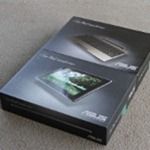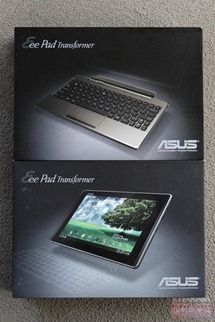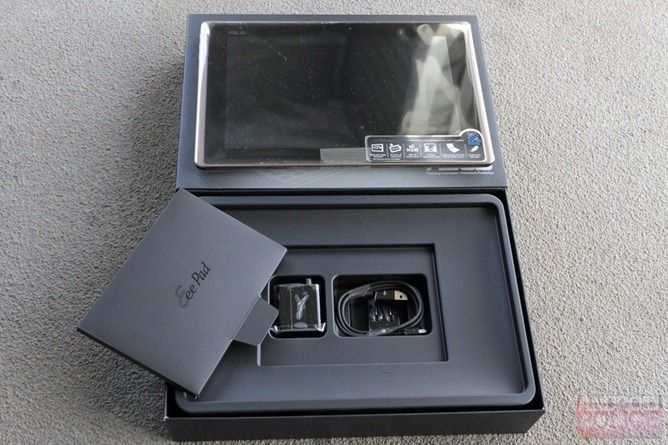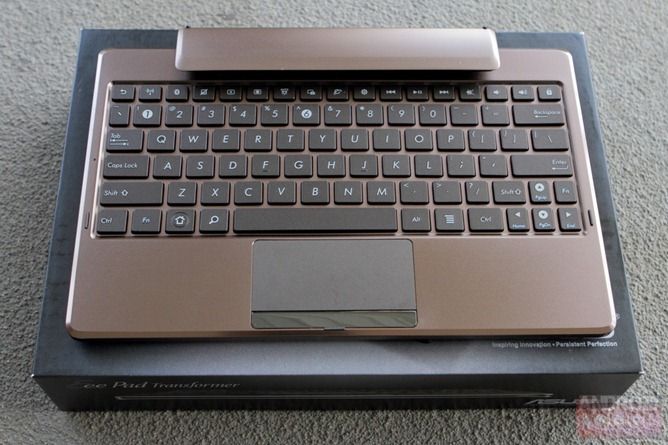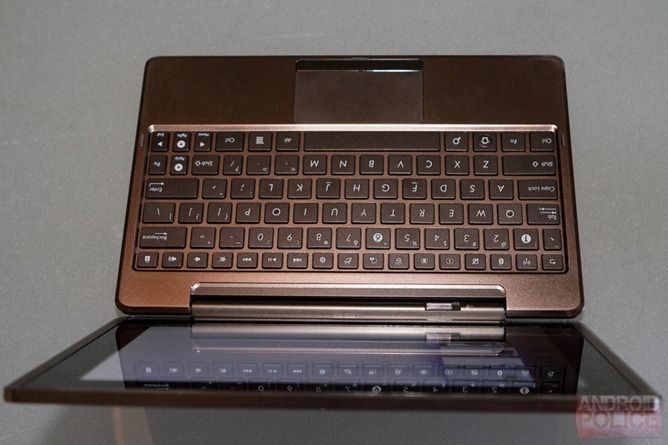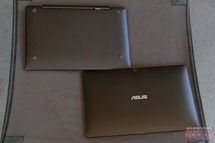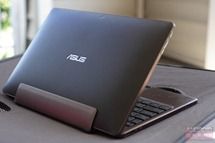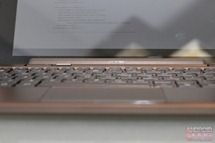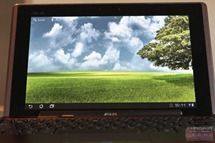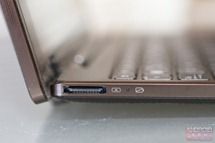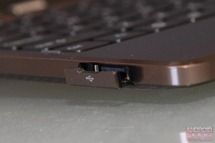Quick Links
Tablets are rapidly changing the way we approach technology. They give a sense of immediacy and tactile connection that desktops and notebooks can't touch; however, I will be the first to admit that the hype seemed stupid to me. Several coworkers purchased the original iPad on the day it launched and were eager to show them off. "But what can you do with it?" was my question, and there wasn't a good answer. The tablet was not fulfilling any needs that netbooks and laptops could not already cover.
A year later, Honeycomb became available on the Motorola XOOM. The OS was rough around the edges, but it showed a different take on tablets - one that blended the always-connected nature of smartphones with many of the advantages of notebooks. Still, after using the XOOM for a few weeks, I found it to be a bit clunky with a mediocre screen. Sure, it was awesome in the way almost any new technology is, but it felt a bit undercooked and overpriced. Fortunately, one of the great things about Android is the open competition between manufacturers, which has resulted in the release of many more Honeycomb tablets.
The Samsung Galaxy Tab 10.1 goes the route of sleek and sexy, straying far from the XOOM. Meanwhile, ASUS has the Transformer, a notebook/tablet hybrid whose specs and even size closely mimic the XOOM's. But that doesn't mean the two tablets are identical - read on to find out how different they really are!
Initial Experience and Impression
The boxes that the Transformer tablet and dock come in are nice and minimal. You can tell ASUS put some effort into presentation and getting the user going right away. After plugging in my tablet to charge it (it was at about 33%), I began the registration process and then left the device alone for a while. When I returned, a few updates (3.1 and an update for the dock) were available, so I let them install themselves while I took care of some other stuff. I returned later to find that all of my phone apps and settings had synced. When I used the tablet at work the next day to SSH into the dev server, I found that even my WiFi settings had been copied over. Now that is slick!
The tablet feels solid, but the very right edge of the trim has a tiny bit of play (though this could just be my unit). It moves by less than a millimeter, but it is still noticeable. The dock feels even more well built and would take quite a bit of effort to flex. I think the dock could survive a significant drop without issue (not so sure about the screen of the tablet), but I decided against testing that out.
What Is Unique About the ASUS Eee Pad Transformer?
In addition to having an excessively long name (I will just refer to it as the Transformer), ASUS' tablet combines two important ideas: a low price and a physical keyboard. Starting at just $400 (for the 16GB model), the Transformer sounds like a "value" tablet. Spoiler alert: it's not. The price is great, but I actually consider the tablet to be better than the XOOM. It feels a hair faster, despite having nearly identical specs, and the screen is significantly better (more on that soon). At this point, I believe that ASUS has a very slim profit margin on the Transformer itself and hopes to make profit on the keyboard dock.
The Keyboard Dock
The keyboard dock is a $150 accessory for the Transformer that allows you to essentially convert the tablet into a touchscreen netbook (hence the Transformer name). The keyboard also includes a trackpad, so you can use a mouse cursor and two-finger scrolling (you can tap the pad or press the left side of the trackpad button to click; the right side acts as the Android back key), as well as a built-in battery that actually charges the tablet. The battery bumps battery life up by about 2/3 of the typical tablet-only battery life. The great thing is that if the tablet's battery is drained, you can simply connect it to the dock, type up a document, and then pull them apart again with a device containing far more juice. I saw about a 38% gain in battery power after one hour of having the tablet connected to the keyboard dock.
The keyboard isn't quite full-sized, so people with large hands might not like it. I have average-sized hands and found that it took a bit of getting used to, but now I can type almost as fast on it as I can on a standard keyboard. The one thing slowing me down is that the keys require a little more pressure than you would expect given the limited travel. This results in a very stiff, well-built feel, but it also means that fatigued fingers are going to have a more difficult time typing quickly. I have also experienced muscle memory - I attempted to hit "Delete"... but it was the lock key. It would have been nice if ASUS had dropped caps lock and replaced it with the tablet lock key - that way they might have been able to include a delete key.
The keyboard dock also includes a variety of function keys for things like back, menu, home, search, Wi-Fi toggle, Bluetooth toggle, touchpad toggle (useful if you find your thumb accidentally using the touchpad while typing), brightness adjustments, screenshot, browser, settings, playback controls, volume controls, and lock. In fact, the only key that I feel is missing is Honeycomb's multitasking button (third from the bottom left of the screen), but that's not a big deal since it's never far away.
I was regularly surprised at how many things just work. Start typing on the dock while on the homescreen and you immediately begin a search (both locally and remote), so you can jump to any app easily. Plug a mouse into the dock and you can use it to control the cursor. Plug a USB thumb drive into the dock and you can access the files on it with the included File Manager app. Typing in a username and password? Yes, you can press tab to jump to the password field. Playing music in a third-party app? No problem - control it with the keyboard's rewind/previous, play/pause, and fast forward/next buttons (and of course the mute, volume down, and volume up keys), even while you're writing a document in another app. Need to copy something to a text field? Ctrl+a, ctrl+c, tab, ctrl+v, exactly as you would expect.
It takes a few tries to find the angle and pressure necessary to connect the tablet and dock, particularly since it takes more effort than expected, but it is a very easy connect/disconnect process once you have become accustomed to it. The connection is also extremely solid, with no wiggle and no need to worry about the tablet accidentally disconnecting from the keyboard when you pick up the combo by just the screen. They are slightly top-heavy though, so taps to the top of the tablet can cause the dock to lift some. One nice advantage of the dock is that it can be used as a stand, meaning that you don't have to hold the tablet in your hand if you're watching a movie.
The only other issue I've seen with the dock is that tapping a key to wake up the tablet can sometimes take a couple of seconds (it is always faster to press the Transformer's lock button), and typing in the browser can be a bit delayed - the characters you typed show up enough a while after you pressed them, which makes the experience feel rather laggy. The latter issue has been improved some by recent OTA updates, but it is not entirely fixed.
The Screen
The Transformer's display is much better than the XOOM's. The Transformer uses an IPS LCD, which gives it better contrast at an angle (though brightness still decreases quite a bit), and its calibration is much better (extremely close to D6500 and 2.2 gamma, for you photographers out there). Saturation and contrast are both better and more consistent. Touch sensitivity is generally good and accurate, though I have noticed occasional touches that are not registered. My sense is that the capacitive touch grid needs to be a little tighter, but it is not a major problem.
My only real complaint about the screen is glossiness. It's a smidgen worse than the XOOM (~10%), which is also too glossy. You can turn the brightness up quite a bit to help combat the problem, but it is still excessive. I really hope that manufacturers take on this issue in the future. Even having an optional matte coating similar to what is on the Notion Ink Adam would be appreciated.
Battery Life
Battery life is one of the hardest things to judge with hardware that can do so many things. For what it's worth, ASUS rates the Transformer's battery life at 9.5 hours of video-watching, bumped up to 16 with the dock. With the tablet connected to the dock and relatively idle for 24 hours (though still syncing multiple Gmail accounts, Twitter, RSS feeds, etc.), I saw the dock drain about 35%. With extremely heavy use, such as playing a game with max brightness and volume, you can bring the battery life down to about 1/2-2/3 of the advertised figure. If you are using the tablet as a netbook for simple typing, browsing, etc., you can expect to get more than the rated hours in active use. Unless you are spending a day just playing games on the tablet, it is unlikely that you will have difficulty getting through a full day or more.
Other Hardware
The speakers are fair but not great (definitely not as good as the XOOM's). The cameras are, well, OK. They couldn't replace an average point-and-shoot, but the convenience is nice. In the sample shots above, you can see a photo from an expensive DSLR (the Canon 7D photo on the left) compared to one from the Transformer's rear camera. Obviously, with the camera costing more than double the price of the tablet and dock put together (not to mention the lens), the DSLR is going to take a better photo, but this should give you a sense of what you can expect to capture with the tablet's rear camera in good lighting conditions.
The Transformer contains both mini HDMI and microSD card slots. Unfortunately, there is no USB connector (full-size, microUSB, or otherwise). Instead, ASUS includes their proprietary connector that can be connected to the dock or to the included Transformer-to-USB cable. The dock itself has that proprietary connector (one to plug the tablet into and one on the side for charging or connecting to a computer) as well as two full-sized USB slots and a card reader (MMC, SD, SDHC). Yes, you can plug a mouse or a USB flash drive into it and it will work exactly as you expect!
Software
We've already covered Android 3.0 in great detail, so read our Honeycomb preview article or our 6,000-word XOOM review for an idea of what to expect. The Transformer only has a few tweaks to the stock Honeycomb experience. First, the software buttons on the bottom left are a thousand times more obvious. The XOOM's buttons look cool, but no one knows what to expect when pressing the up arrow (or is it a house?), whereas the corresponding button clearly represents "home" on the Transformer. Additionally, Honeycomb appears to be a bit more stable than on the XOOM (though the fact that Motorola's tablet was running a newer version of the OS could be a big part of that). The main software error I have seen is the launcher force closing. It restarts itself just fine, but that does give a sense of some missing polish. I have also had the browser close itself without any indication as to why (and no force close dialog) a couple of times.
The Transformer comes with a few different apps such as Polaris Office, allowing you to create documents, spreadsheets, and presentations without needing to spend money on extra software. In fact, I am typing this entire review on the Transformer using Polaris Office and that really drives home the value of the dock. There is no way I would attempt to do that on a touch screen, especially since I am writing most of it on a very shaky bus.
A file manager app (conveniently called "File Manager") is also included with the Transformer, making it easy to access the file system or any USB thumb drives you attach. The "My" suite - MyCloud, MyLibrary, and MyNet - is also pre-installed on the tablet. The MyCloud app gives you MyContent (essentially cloud storage), MyDesktop (remote desktop access), and @Vibe (providing access to radio, music, and video). MyLibrary lets you easily access all your reading content, including eBooks, PDFs, and newspapers. MyNet lets you access content from a DLNA-based server, so you can listen to music, view photos, and even stream videos (up to 1080p).
Conclusion
The Good
- Price!
- Screen calibration and color accuracy
- Keyboard dock makes the Transformer far more useful
- Dock has two full-sized USB slots
- Card readers and mini HDMI
- Mostly stock Honeycomb with the addition of some useful software
The Bad
- Screen glossiness
- Slightly stiff and small keyboard
- Slight waking delay when tapping a dock
- Honeycomb still needs some polish; the launcher occasionally force closes
- The charging cable is proprietary (no microUSB port); the dock does not come with a cable
- Audio cut out a few times in Galaxy on Fire 2; I am not sure if that is the tablet or the game, but tapping either volume button fixes the problem
Final Thoughts
If you just want a thin, sleek, and sexy tablet, you'd best look elsewhere (the Galaxy Tab 10.1 is a good option). If you expect to do a lot of typing and are looking for something centered more around productivity, you should absolutely consider the ASUS Eee Pad Transformer. My time with it has left me genuinely impressed - Michael Bay wishes he could make Transformers half as awesome as this one.

